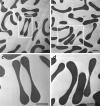Increased acid sphingomyelinase levels in pediatric patients with obesity
- PMID: 35768443
- PMCID: PMC9243121
- DOI: 10.1038/s41598-022-14687-9
Increased acid sphingomyelinase levels in pediatric patients with obesity
Abstract
The level of secretory acid sphingomyelinase (S-ASM), a key enzyme in the sphingolipid metabolism, is elevated in a variety of human diseases, including in the serum of obese adults. Alterations in S-ASM were also found to induce morphological changes in erythrocytes. Consequently, the inhibition of S-ASM by functional Inhibitors of ASM (FIASMA) may have broad clinical implications. The purpose of this study was to assess S-ASM activity in pediatric patients with obesity and healthy matched controls, as well as to investigate the erythrocyte morphology using transmission electron microscopy. We recruited 46 obese patients (mean age 11 ± 2.9 years) and 44 controls (mean age 10.8 ± 2.9 years). S-ASM activity was significantly higher (Wilcoxon signed-rank test p-value: 0.004) in obese patients (mean 396.4 ± 49.7 pmol/ml/h) than in controls (mean 373.7 ± 23.1 pmol/ml/h). No evidence of morphological differences in erythrocytes was found between the two populations. We then carried out a case-control study based on the spontaneous reporting system database to compare FIASMAs with NON-FIASMAs in terms of weight gain risk. Children who received FIASMA had a significantly lower frequency of weight gain reports than patients who took NON-FIASMA agents (p < 0.001). Our findings suggest there is an intriguing possibility that S-ASM may play a role in pediatric obesity. This pilot study could serve as the basis for future studies in this interesting field of research.
© 2022. The Author(s).
Conflict of interest statement
The authors declare no competing interests.
Figures



